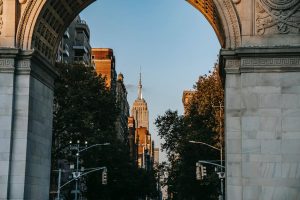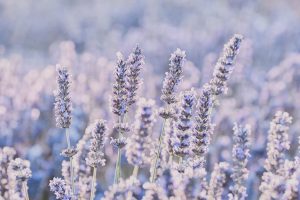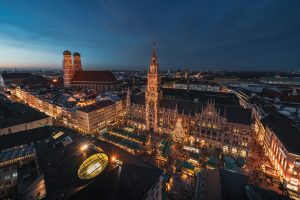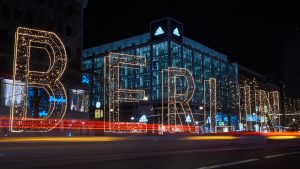Nestled in the heart of Tuscany, Florence stands as a testament to the enduring beauty of the Renaissance era. Stepping into this enchanting city is like stepping back in time, where art and architecture intertwine to create a captivating atmosphere.
From the birthplace of the Renaissance to the winding streets of its historic center, Florence is a treasure trove of artistic masterpieces waiting to be discovered. Its world-class museums and galleries house some of the most renowned works of art, inspiring both locals and visitors alike.
But it is not just a city frozen in the past; Florence continues to inspire the present with its timeless beauty. There is something truly magical about this city that leaves you yearning for more, wanting to uncover its secrets and immerse yourself in its rich cultural heritage.
The Birthplace of the Renaissance
Located in Italy, Florence is widely recognized as the birthplace of the Renaissance, a period of immense cultural, artistic, and intellectual growth that laid the foundation for the modern world. The city's cultural significance during this time cannot be overstated.
It was in Florence that the revival of classical learning and the arts took place, sparking a renewed interest in humanism and the pursuit of knowledge. The birthplace of the Renaissance, Florence became a vibrant center for creativity and innovation, attracting artists, scholars, and thinkers from all over Europe.
Florence's cultural significance as the birthplace of the Renaissance can be seen in its architecture, art, and literature. The city's architectural masterpieces, such as the Florence Cathedral, the Palazzo Vecchio, and the Basilica of Santa Croce, showcase the innovative techniques and aesthetic principles that defined the Renaissance style. These buildings not only served as symbols of wealth and power but also as testaments to the artistic and intellectual achievements of the time.
In addition to its architecture, Florence was also home to some of the greatest artists of the Renaissance, including Leonardo da Vinci, Michelangelo, and Botticelli. These artists revolutionized the world of art with their technical skill, attention to detail, and innovative use of perspective. Their works, such as Leonardo's 'Mona Lisa,' Michelangelo's 'David,' and Botticelli's 'The Birth of Venus,' continue to captivate audiences and serve as enduring symbols of the Renaissance.
Furthermore, Florence's importance as the birthplace of the Renaissance is evident in its rich literary tradition. The city was home to renowned writers and thinkers like Dante Alighieri, Petrarch, and Machiavelli, who contributed to the growth of humanist ideas and the development of the Italian language. Dante's 'Divine Comedy,' for example, is considered one of the greatest literary works of all time and showcases the intellectual and philosophical themes that characterized the Renaissance.
Captivating Artistic Masterpieces
The artistic masterpieces of Florence during the Renaissance era captivate viewers with their exquisite beauty, technical mastery, and profound artistic expression. These timeless works of art continue to inspire and awe audiences, showcasing the incredible talent and creativity of the artists of that period. Florence, with its rich cultural heritage, holds an unparalleled artistic legacy that has left an indelible mark on the world of art.
One cannot help but be drawn to the timeless elegance of these masterpieces. From the delicate brushstrokes of Botticelli's 'The Birth of Venus' to the intricate details of Michelangelo's 'David,' these artworks exude a sense of grace and refinement. The skillful use of color, light, and shadow creates a visual experience that is both captivating and emotionally resonant.
Moreover, these artistic masterpieces are not just visually stunning, but they also carry deep meaning and symbolism. Each painting, sculpture, or fresco tells a story, conveying complex themes and ideas. Whether it is the religious imagery in Leonardo da Vinci's 'The Last Supper' or the humanistic ideals portrayed in Raphael's 'The School of Athens,' these artworks invite viewers to contemplate the human condition and the world around them.
The artistic legacy of Florence during the Renaissance era is nothing short of extraordinary. It was a period of great innovation and experimentation, where artists pushed the boundaries of artistic expression. The city became a hub of creativity, attracting some of the greatest minds of the time, including Leonardo da Vinci, Michelangelo, and Botticelli. Their works not only defined the era but also laid the foundation for future artistic developments, influencing generations of artists to come.
Winding Streets and Historic Center
With its labyrinth of winding streets and historic center, Florence transports visitors back in time to experience the charm and authenticity of the Renaissance era. As one explores these narrow, cobbled streets, it becomes evident that Florence is more than just a city of captivating artistic masterpieces – it is a living testament to the cultural preservation of its past.
The winding streets of Florence are not just pathways to be traversed; they are a time capsule that reveals hidden gems of the city's rich history.
The preservation of Florence's historic center is a testament to the city's commitment to safeguarding its heritage. The city has implemented strict regulations to protect its architectural treasures, ensuring that modern construction does not overshadow or compromise the integrity of the historic buildings. This dedication to cultural preservation has allowed Florence to retain its unique character and transport visitors to a bygone era.
Exploring the winding streets of Florence's historic center is like embarking on a treasure hunt. Each turn reveals a new architectural marvel, a hidden square, or a quaint trattoria tucked away in an alley. From the magnificent Duomo to the iconic Ponte Vecchio, Florence's historic center is a tapestry of architectural wonders that continue to inspire and captivate visitors from around the world.
World-Class Museums and Galleries
Continuing our exploration of Florence's cultural legacy, we now turn our attention to the world-class museums and galleries that house some of the most renowned artistic treasures in history. Florence is home to an exceptional array of museums and galleries, each offering a unique experience and insight into the world of art.
One of the most prominent museums is the Uffizi Gallery, which boasts an extensive collection of Renaissance masterpieces. Visitors can admire works by renowned artists such as Botticelli, Michelangelo, and Raphael. The gallery also offers interactive exhibits that provide a deeper understanding of the artistic techniques employed during this period.
Another must-visit museum is the Accademia Gallery, famous for housing Michelangelo's iconic sculpture, David. This magnificent piece exemplifies the artist's mastery of human anatomy and has become a symbol of Florence's artistic prowess.
In addition to traditional masterpieces, Florence also celebrates contemporary art. The Strozzina Center for Contemporary Culture, located in the Palazzo Strozzi, showcases the works of emerging and established contemporary artists. This dynamic space encourages dialogue and experimentation, fostering a deeper appreciation for modern artistic expressions.
Florence's world-class museums and galleries offer a captivating journey through the history of art. From Renaissance masterpieces to contemporary creations, these institutions provide a comprehensive understanding of Florence's artistic heritage and continue to inspire and engage visitors from around the world.
Inspiring the Present With Renaissance Beauty
Renaissance beauty continues to inspire and shape contemporary artistic expressions, serving as a timeless source of inspiration for artists across various mediums. The present-day influence of Renaissance art can be seen in the works of painters, sculptors, architects, and even fashion designers, who draw upon the aesthetic principles and techniques developed during this period.
One of the ways in which Renaissance beauty influences the present is through its emphasis on proportion, balance, and harmony. Artists today continue to strive for these qualities in their work, recognizing the enduring appeal of these principles. Whether it's the use of the golden ratio in a painting or the incorporation of classical elements in architectural designs, the influence of the Renaissance is evident.
Cultural preservation also plays a significant role in the present-day influence of Renaissance beauty. Many cities, including Florence, have taken steps to protect and restore their Renaissance heritage, ensuring that future generations can continue to be inspired by its beauty. Museums and galleries play a crucial role in this preservation effort, showcasing Renaissance masterpieces and educating visitors about their historical and artistic significance.
Frequently Asked Questions
What Is the Population of Florence?
The population of Florence is an important demographic factor that contributes to the city's vibrant cultural scene and its reputation as a hub for Renaissance art and architecture.
How Long Did It Take for the Renaissance to Flourish in Florence?
The length of time it took for the Renaissance to flourish in Florence was influenced by various factors, including political stability, economic prosperity, and the patronage of influential families. These elements contributed to the city's artistic and architectural achievements during this period.
Are There Any Famous Renaissance Artists Who Were Born in Florence?
There are several famous Renaissance artists who were born in Florence, including Michelangelo, Leonardo da Vinci, and Botticelli. Their contributions to art in Florence have had a significant impact on the development and flourishing of the Renaissance period.
Can Visitors Take Guided Tours to Explore the City's Historic Center?
Visitors to Florence can explore the city's historic center through a variety of guided tour options. These tours provide an in-depth and contextual experience, allowing visitors to discover the rich historical landmarks that make Florence a hub of Renaissance art and architecture.
Are There Any Modern Art Installations or Exhibitions in Florence That Draw Inspiration From the Renaissance Period?
There are several modern art installations and exhibitions in Florence that draw inspiration from the Renaissance period. These exhibits showcase contemporary artists who incorporate Renaissance techniques, themes, and aesthetics into their work, offering a unique blend of old and new artistic styles.
Conclusion
In conclusion, Florence stands as an unparalleled hub of Renaissance art and architecture, showcasing captivating artistic masterpieces and a historic center filled with winding streets.
The city's world-class museums and galleries further enhance its cultural significance, inspiring present generations with the beauty of the Renaissance.
As the birthplace of this transformative period, Florence's rich history and artistic heritage continue to captivate and inspire visitors from around the world.






